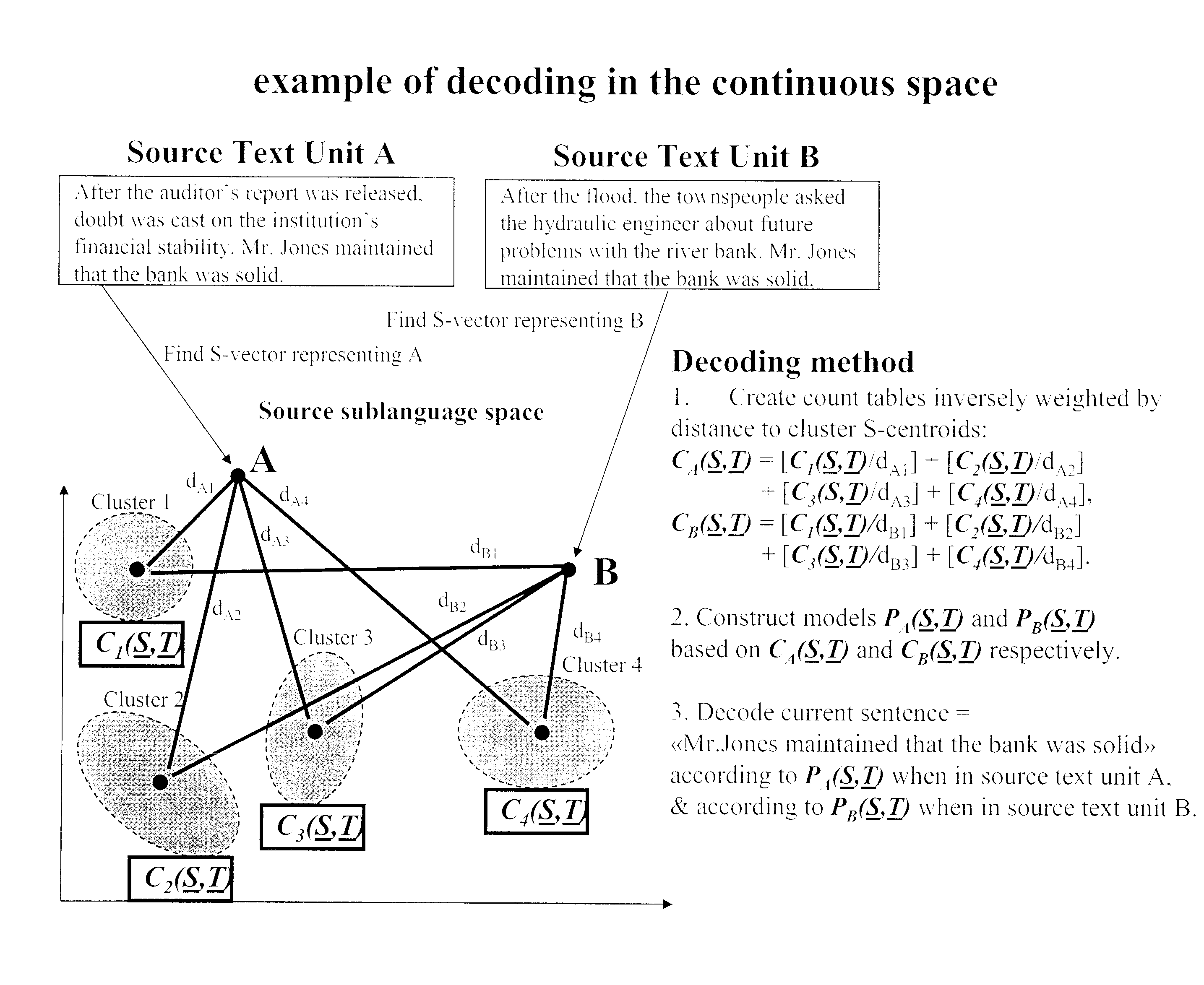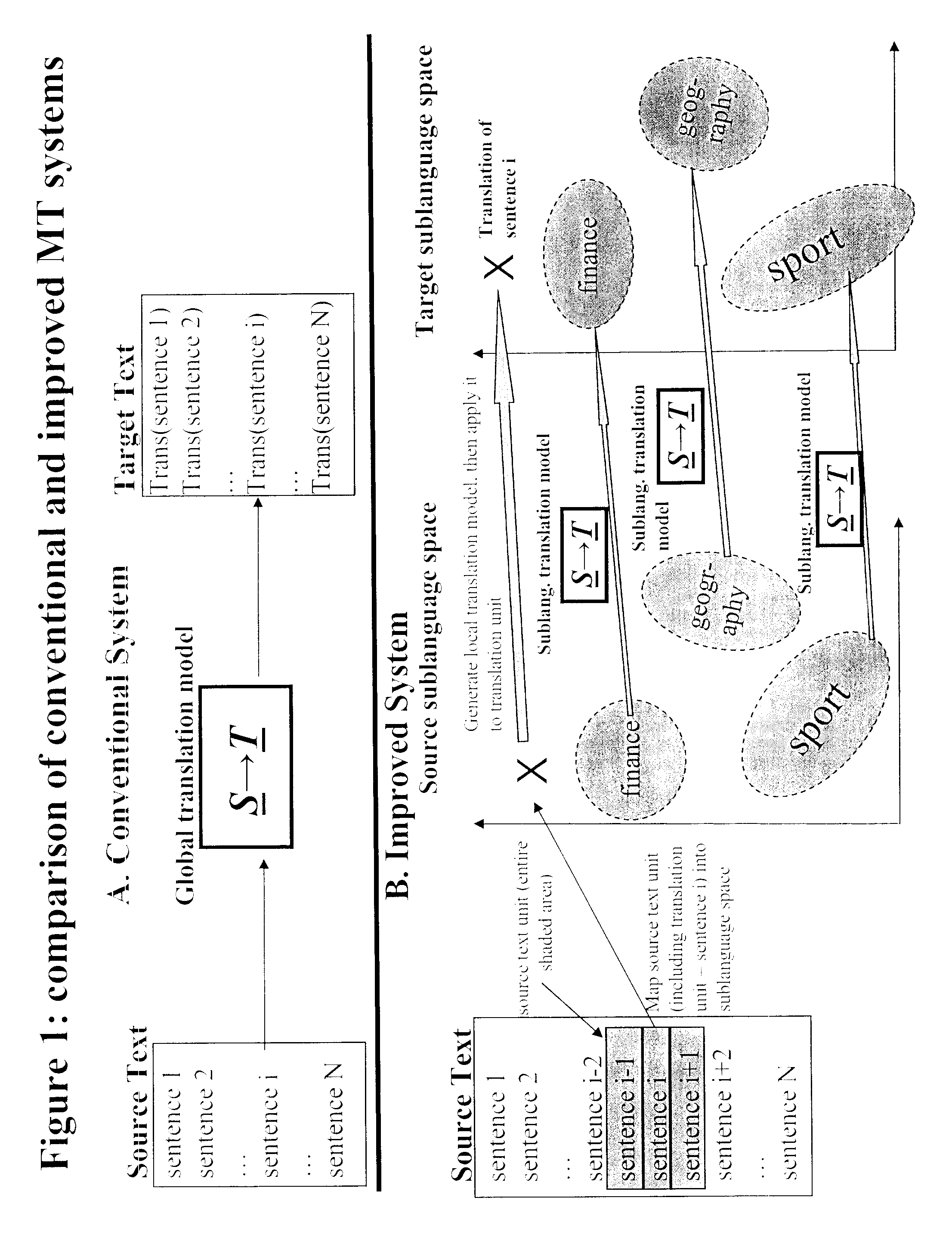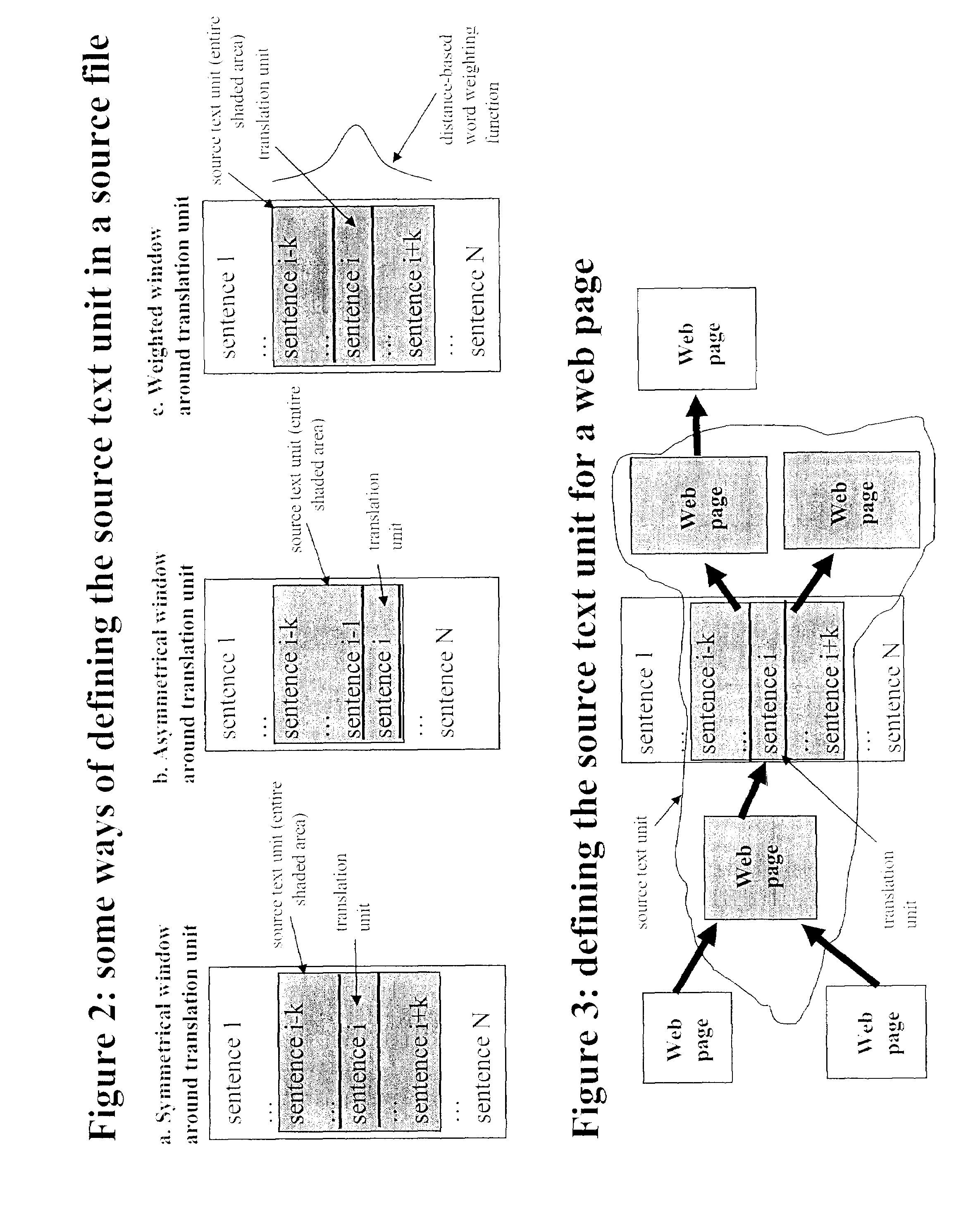Statistical machine translation adapted to context
a statistical machine translation and context technology, applied in the field of methods and methods for adapted language translation, can solve the problems of requiring hundreds or thousands of computations, slow off-line process training a current statistical machine translation system, and inability to create such a system
- Summary
- Abstract
- Description
- Claims
- Application Information
AI Technical Summary
Benefits of technology
Problems solved by technology
Method used
Image
Examples
Embodiment Construction
[0029]In this document, the source word sequence S being translated (which is typically a sentence or line of text) will be referred to as the “translation unit”. The invention can use information from a chunk of source text that includes translation unit S to produce a better translation of S into the target language. This chunk of text that includes S will be referred to as the “source text unit”. Thus, the translation produced when translation unit S is put into the improved MT system by itself may differ from the translation produced for S when it is put into the improved system along with the rest of the source text unit containing S.
[0030]An embodiment of the machine translation (MT) system described here resembles a good human translator in that it can carry out context-dependent translation—that is, translation adapted to the text environment in which the translation unit finds itself. The lower part of FIG. 1 shows how the invention achieves this.
[0031]One aspect of the inv...
PUM
 Login to View More
Login to View More Abstract
Description
Claims
Application Information
 Login to View More
Login to View More - R&D
- Intellectual Property
- Life Sciences
- Materials
- Tech Scout
- Unparalleled Data Quality
- Higher Quality Content
- 60% Fewer Hallucinations
Browse by: Latest US Patents, China's latest patents, Technical Efficacy Thesaurus, Application Domain, Technology Topic, Popular Technical Reports.
© 2025 PatSnap. All rights reserved.Legal|Privacy policy|Modern Slavery Act Transparency Statement|Sitemap|About US| Contact US: help@patsnap.com



